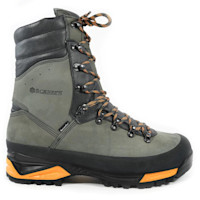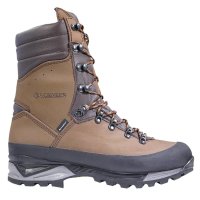
You’ve got questions. We’ve got answers (and if we don’t, we’ll make them up). Every day, fellow MeatEaters send us more than 100 emails regarding hunting, fishing, cooking, conservation, and more. So, we decided to publish a series dedicated to our favorite FAQs. This is Ask MeatEater.
My feet are so adapted to wearing boots that I don’t even think about breaking boots in. I might in the case of an extremely stiff, mountaineering-style sheep hunting boot, but most hunting boots have enough flex that they don’t warrant a break-in for me.
But that’s me and that’s because my feet are broken-in; they are accustomed to wearing boots. I lace up a hunting boot half of the days in a year. Where hot spots and subsequent blisters might occur, my feet are already calloused and tough. If your feet are not as seasoned as your boots, you’re asking for trouble. And don’t think that you can save time by borrowing a pair of well-worn boots. If your feet are soft, they simply will not withstand a day of hunting in any boot. I’d think of your boot break-in more as a break-in for your feet. And once your feet are in harmony with your boot, you’ll have a broken-in boot.
If your feet aren’t ready for your new boots, here are a few tips to get them and your boots ready for hunting season: Take long walks in them because that’s what a day of hunting is—a long walk carrying a weapon. But you can get benefits from shorter, everyday wear as well. Take the dog out and mow the grass in them. Every time you lace them up, the boot and your foot become better friends. Get them wet to soften the leather by purposefully walking through puddles or crossing small creeks. Waxing and waterproofing also soften leather. Leather conditioners do the same, but be careful; you can over-soften your boot. On a steep sidehill in the Rockies you’re going to want that stiffness.
Make sure to wear the same socks that you’ll be hunting in. This is a system, so don’t upset the system by swapping out the integral layer that connects your foot to the boot. If you’ll be hunting mountainous terrain, make sure to break in your boots (and feet) on hills. The hills will not break your boots in any better than flatter trails, but climbing hills—which causes heavy flex to the boot and movement of the heel within the boot—will expose weaknesses in your foot/boot system. If hills are not available, climb stairs.
Finally, buy new boots well ahead of your hunt. Your feet and your new boots should be well on their way to being hunt-ready in a month’s time. Fifty miles will suffice, but 100 miles is optimal.










